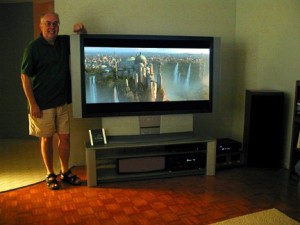By Joe Moore
I’ve been reading news stories lately about the changing role of libraries, and to a certain extent, their demise. Some blame the economy is killing libraries—shorter hours open less days per week with fewer features. Others heap a lot of blame on the rapid growth and popularity of smart-phone technology and e-books. In reality, it’s probably a combination of both along with a changing demographic in the community.
No doubt, someday in the future, history students might study the rise and fall of these cavernous, book-loaning institutions. They may wonder why this somewhat inefficient system of printing and storing large quantities of books ever made sense. And they may chuckle at pictures of endless shelves housing thousands of books with their ever-yellowing pages that, from the day they left the printer, were on a non-reversible journey to the landfill.
It wasn’t that long ago that you couldn’t read books on a handheld electronic device or a cell phone. You couldn’t easily download a book onto a computer laptop to read it. The world wasn’t debating whether libraries would one day be unnecessary, as book reading and book loaning become possible, even probable, online or wireless. And, more importantly, money wasn’t so tight that libraries would be considered an unaffordable luxury.
I live in South Florida. Down here, municipalities are having to decide whether some libraries should be consolidated or closed, and whether hours can be cut back even further. Library regulars are dealing with more of the electronic book world sooner than they expected as they see traditional library buildings closing. County government is wrestling with a budget that’s steadily dwindling. Library jobs are being cut and the hours of operation are being significantly reduced. All branches are now closed Saturdays, and they will no longer be open past 6 PM on weekdays. The county is not ready to close all the library doors and send patrons online yet. But it’s not out of the question for the future.
Electronic book readers are still too pricy to loan out, but many librarians are predicting a time when they’ll be cheap enough to do it. I’m surprised that a manufacturer hasn’t stepped forward with a specialized, scaled-down e-book reader that can be used just for that purpose—perhaps with a built-in GPS (like cell phones) for retrieval in case of theft or overdue status. Or better yet, sell the specialized e-readers to registered library customers at a greatly reduced price or as a rental. Maybe the device would have access to the content of that particular library system only.
Funding is one way to save a library. But with property values plummeting along with property tax revenue collections, libraries are way down on the list of priorities. I recently read that one in three people who visit a South Florida library are not there to read or borrow books. They’re there for computer access or training. With the jobless rate so high, many people can no longer afford Internet access at home. They head for the local library to job search and electronically apply for employment. And if they have a laptop, they’re in the library to take advantage of free Wi-Fi offered at some locations.
So what does the future of libraries look like in your community? Should library systems join forces with companies like Starbucks and have a café in each branch to generate revenue? Are there ways for them to self-fund? Is the day of free books coming to an end?What will help libraries keep their doors open and their patrons not left high and dry?

